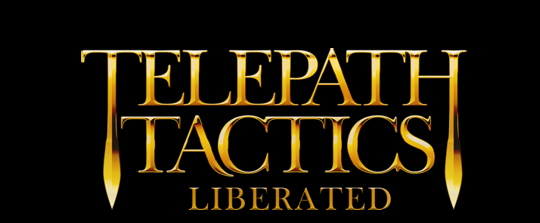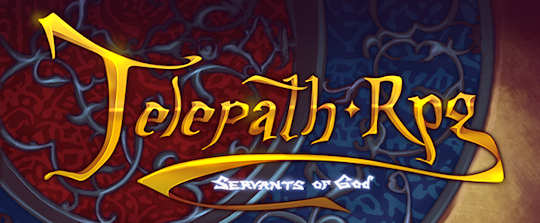Almost exactly one year ago, I discussed the four virtues of a good turn-based combat system and shared 12 techniques that RPGs commonly overlook for achieving those virtues. Today, after a year of contemplation and careful design work, I feel ready to expand the list. What follows are 6 additional techniques that RPGs should start using with greater regularity in order to achieve clear, adequately deterministic combat systems with emergent complexity and a variety of tactical tools.
(1) Elevation effects. This is a straightforward extension of “variable terrain.” Elevation effects may grant range, accuracy and damage bonuses for attacks launched from the high ground, consonant penalties for attacks launched from the low ground, and hinder movement for certain character types. In other words, elevation effects are another way of differentiating parts of the battlefield and giving players minor objectives to weigh during the course of battle. (Should I capture the high ground, or go for another objective elsewhere?) They also work to provide further points of differentiation between characters: melee characters versus ranged characters, grounded characters versus characters with vertical movement abilities, and so on.
Speaking of movement…
(2) Movement-focused special abilities. Movement tends to get short-changed when it comes time for special abilities in RPGs. Most RPGs give their characters damage-dealing attacks, some buffs, some de-buffs, maybe a few summoning spells, and then call it a day. It’s strange that we don’t see more movement abilities, particularly so given that war games—themselves the progenitors of role-playing games—originated with chess. Chess not only distinguishes pieces almost entirely through their unique movement patterns, it also throws in special movement abilities for good measure. Pawns, for instance, get an optional bonus space when first moving forward from their starting spaces. There is also castling. It’s a little odd to see so few turn-based RPGs employ special movement abilities, given their long and distinguished heritage.
It isn’t necessary to introduce a huge number of disparate movement patterns à la chess; just one or two special movement abilities can do the trick. Recent Fire Emblem games, for instance, give larger (particularly mounted) characters the ability to rescue smaller characters and drop them elsewhere. Games in the Disgaea series let human characters pick up and throw allies and enemies, or even stack characters in a tower to set up elaborate throw chains. The rules in these latter examples themselves are simple and easy to grasp, but their tactical implications are far-reaching, opening up many new possibilities over the course of a single battle.
(3) Item drops. I’ve been thinking a lot about the last couple of iterations of Super Smash Brothers; in particular, about the way they punish players who stay put in an inaccessible corner of the battlefield. There are a few ways the game accomplishes this, but perhaps the most salient is through its use of random item drops. Random item drops reward mobile players: a player who controls most of the map is going to grab the vast majority of the items, many of them extremely helpful during the battle. By contrast, a player who turtles in a small portion of the map is statistically unlikely to snag more than an isolated few. This encourages dynamic play by giving battle advantages to the non-turtling player.
It doesn’t have to be items. Dune 2, the great-grandaddy of the RTS genre, dropped crates containing free resources at random onto the battlefield, encouraging map control. It doesn’t have to be drops, either: numerous Japanese strategy RPGs employ static treasure chests to force players to advance at a steady clip, or else surrender their contents to thieves who spawn on the battlefield. The key thing is that there should be time-sensitive elements with unpredictable locations that give a tactical advantage to the player if he or she gets there first.
(4) Zones of Danger. Here is another thing that Super Smash Brothers does especially well, and which turn-based combat systems could stand to learn from. Super Smash Brothers maps tend to contain areas that put the player at greater risk from other players, typically due to the risk of taking environmental damage. Even better, those areas are oftentimes dynamic, meaning that the player has to adapt to a changing battlefield.
X-Com: UFO Defense had an implementation of this with its famously out-of-control fire and smoke dynamics, seemingly modeled on cellular automata. Dune 2, in turn, had a particularly ingenious approach with its “spice blooms”; a spice bloom was essentially a natural land mine that would destroy every unit on top of it when triggered (an event called a spice blow), but would also leave behind valuable resources. In this way, it served as both an environmental hazard and a random resource drop all at once.
(5) Death countdowns and revival. When a character falls on the battlefield, try having their unconscious body stick around for a while before death; give the player a chance to revive that character under a strict time limit. This simple rule both gives the player an opportunity to recover from mistakes, and provides them a challenging side objective with vast potential to spawn interesting dilemmas. You can see this technique at work in Final Fantasy Tactics, Tactics Ogre: Let Us Cling Together and X-Com.
(6) Character-centric consequences. I touched on something related to this in the last article under the rubric of providing multiple battlefield objectives. That was about giving battlefield events plot consequences. Here, however, I want to suggest to you that we should be doing everything we can to make our decisions on the battlefield have character development consequences.
Party RPGs with perma-death necessarily have a touch of that, provided that character deaths play a role in dialogue and cut scenes going forward. (This happens in Fire Emblem games and in Telepath RPG: Servants of God.) But that’s just scratching the surface of what is possible.
I’m going to talk about a game that isn’t an RPG for just a second: Crusader Kings 2. Crusader Kings 2 is a recently-released strategy game that does exactly what I was talking about back in 2010: it models characters in an emergent way, then lets the game’s story grow organically out of their interactions. This sort of emergent personality modeling completely sidesteps the supposed incompatibility of narrative and gameplay, and sports the potential to make combat interesting on a level that few (if any) games have attempted to date.
Now, I’m not suggesting that RPGs should go whole hog and ditch their hand-crafted narratives in favor of an approach like this; rather, just consider for a moment the possibilities opened up by a hybrid approach. Suppose that characters in your party had certain personality attributes, and that those attributes would impact their performance on the battlefield. Maybe one character is “jealous,” so her accuracy drops if another character of the same gender gets between her and her love interest. Maybe another character is “greedy,” and gets angry if another character finishes off an enemy he wounded. Maybe a character who gets close to death one time too many gets a “traumatized” attribute and starts having flashbacks in cut scenes outside of combat. Maybe a character subject to a missed attack that would have otherwise been fatal will become convinced that (the) God(s) protected her, changing her dialogue out of combat and making her less careful in combat. I’m just rattling off examples; the possibilities here are absolutely limitless.
Fire Emblem and its imitators have a very narrow implementation of character-centric consequences in so-called support systems, where characters that spend a lot of time near one another in battle can develop closer relationships and give each other bonuses in combat by fighting together. A different (also very narrow) implementation of this can be found in the “level up by doing” systems of the Elder Scrolls games and X-Com, where having characters perform specific actions makes them better at those actions over time.
Those sorts of implementations are elegant, but limited both in scope and in approach. A more robust, simulational implementation–a combat system which models character personalities and motivations, then impacts them dynamically over the course of a battle based on events as they occur–has enormous potential to lead to extremely interesting emergent situations in combat, both tactically and narratively.
Conclusion
Well folks, that brings us to 6! As in the previous article, I’ve chosen to focus only on techniques that I’ve seen used in few (if any) RPGs. Hopefully this gives you some ideas for making your turn-based combat system more interesting while avoiding bloat and obtuseness. If you can think of any techniques I’ve missed that deserve a mention, please feel free to contribute in the comments below.






